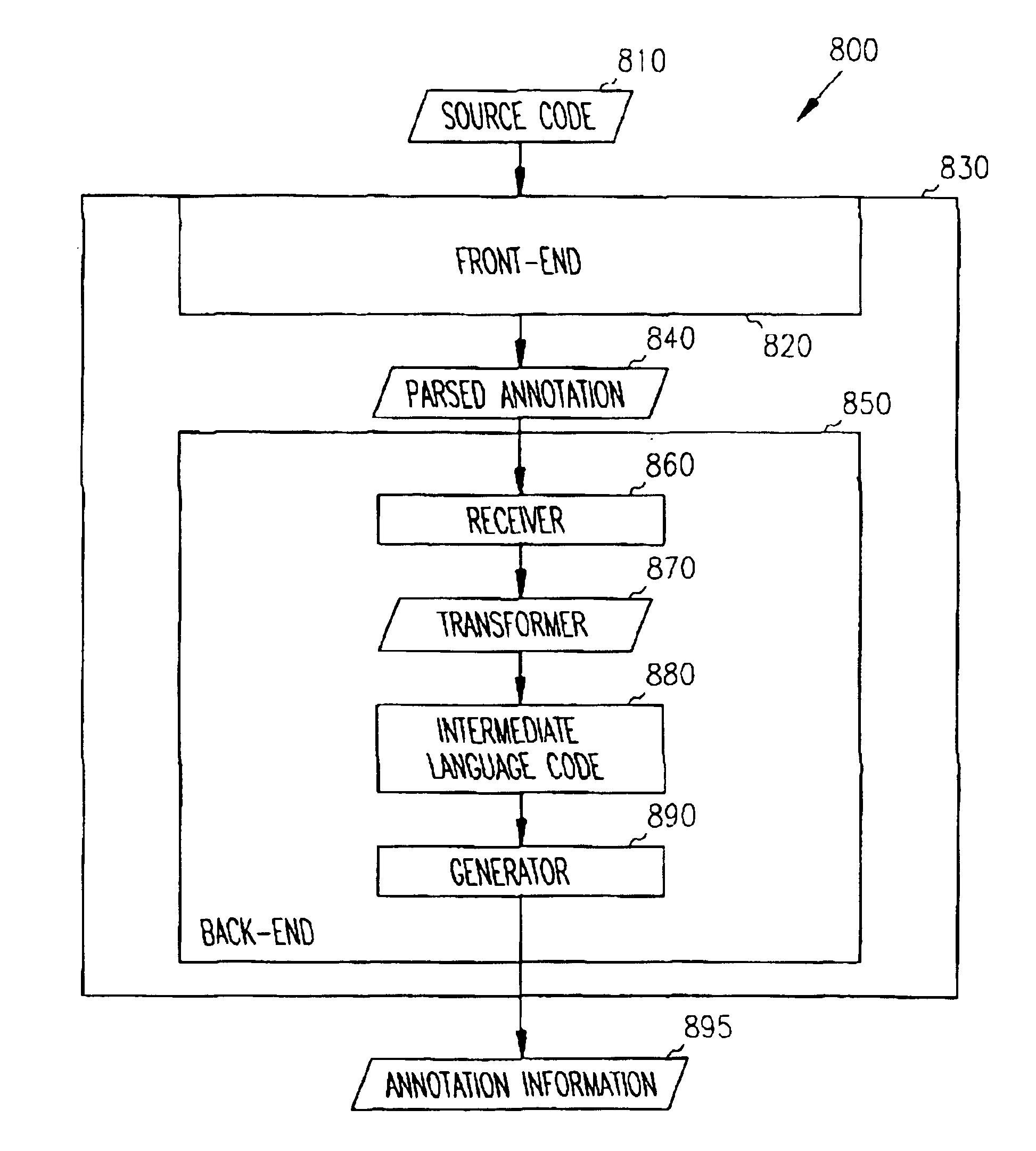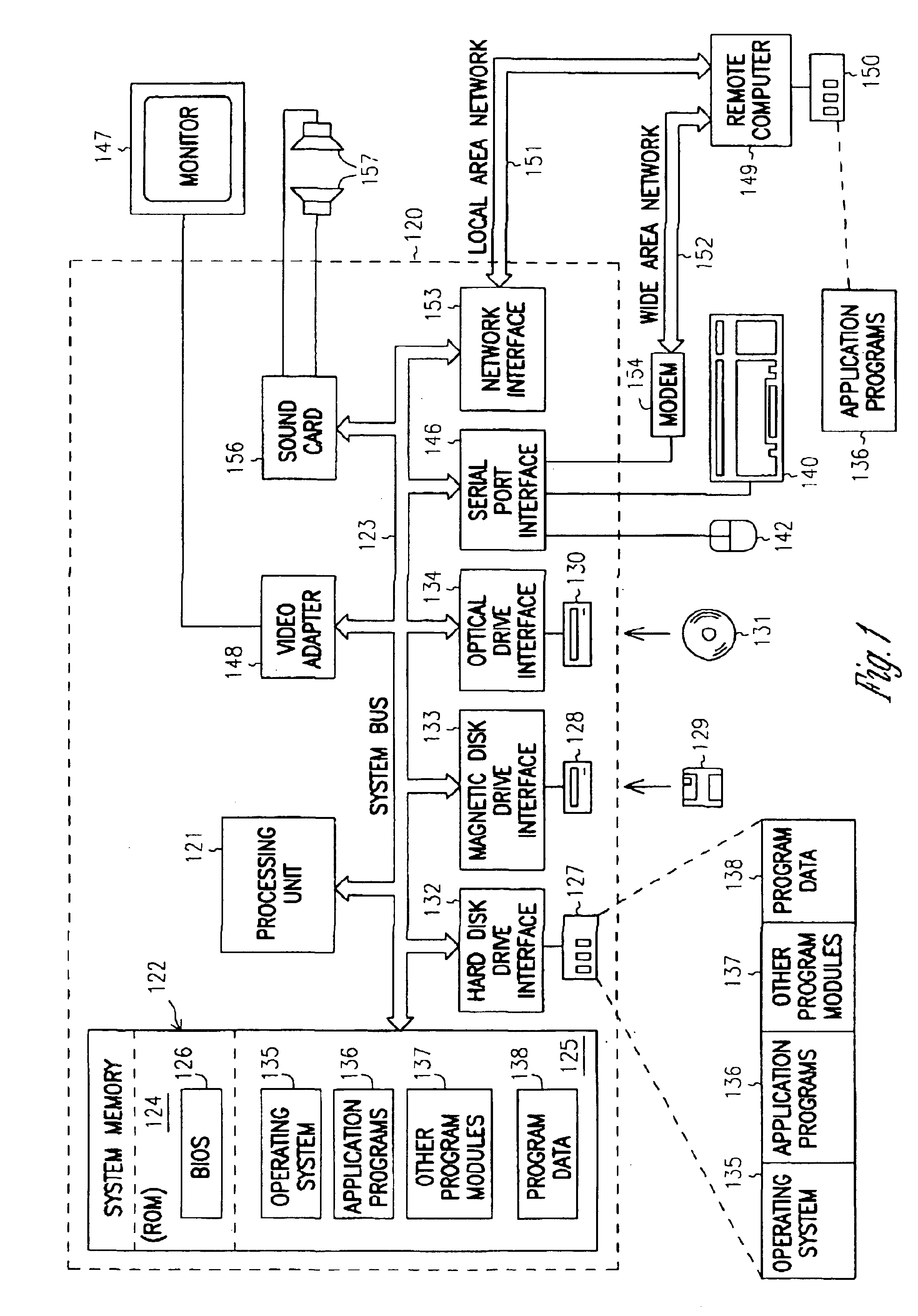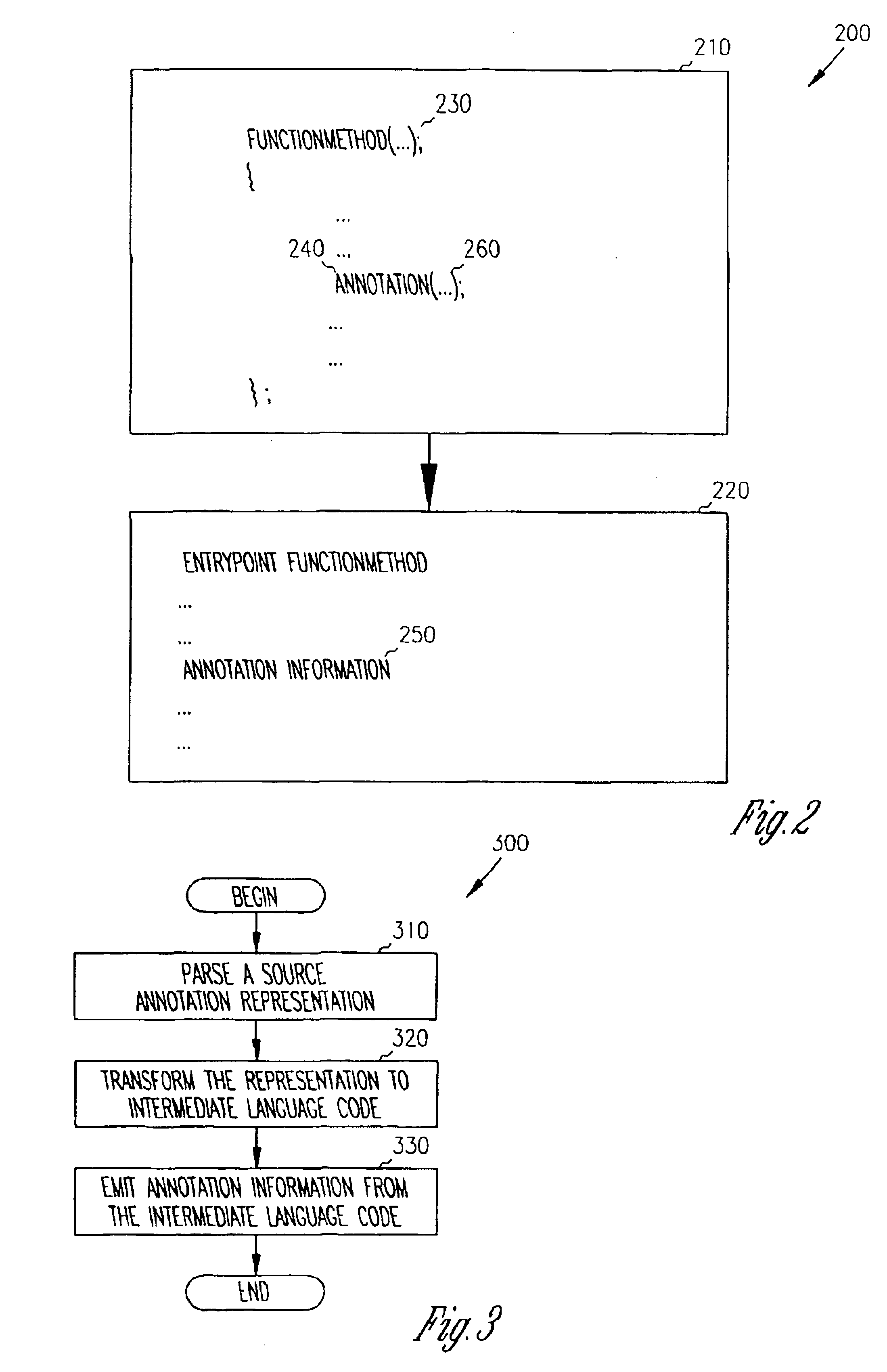There are several problems with the conventional techniques.
One problem is that the analysis tool settings exist independent from the source code from which the code is generated.
Another problem is that the references in the analysis tool settings to the code may depend on the target environment for which the object code is targeted.
One example of this problematic dependency is wherein the names of C and C++ functions and data as identified in object code do not match the names used in the source code.
More specifically, where the source code is written in C++, factors beyond the
calling convention may complicate the dependency of the analysis tool settings on the target environment.
Another problem related to mangled names is that different configurations of a single set of source code for a single target environment may have differences in the type of some item that results in different mangled names for the different configurations.
Yet another problem related to mangled names is that the names are meant to be meaningful to
computer software but not to users.
If users have to specify mangled names in their analysis tool settings the users are more likely to make errors than if the users are able to use the same names used in the source code.
Another problems is that names in the source code may not need to be unique.
This is a further complication because it required the analysis tool to define a mechanism to qualify the name specified by the
source code file or more likely object code file in which it resides.
The name or path of the object code file may vary depending on the target environment introducing further complications.
Still another problem occurs when a function is inlined at the position in the source code where the function is referenced, and the function loses its separate identify.
The lack of identity makes it difficult or impossible to refer to this inline instance in the analysis tool settings.
Still yet another problem is related to C+ templates or similar source constructs.
There are more cases where it is difficult to identify the names in the analysis tool settings or the source code author or analysis tool user are unaware a setting is necessary.
There are a number of problems that make this unsuitable for annotating object code.
One problem is that compilers are designed to ignore the comments, though a
compiler could be designed to recognize some of these annotations on its own and
handle them in some special way.
Another problem is related to the capability of preprocessing C and C++ source and subsequently expanding #include file references and
macro definitions.
The resulting files usually have comments removed which results in the loss of all the source code annotations.
Another problem is that annotations expressed in comments can't make use of the preprocessing facilities of languages like C and C++ which is important to allow annotations to vary according to target environment, build configuration, or any other factor desired by the source code author and / or analysis tool user.
This form of annotation has problems because it is source line oriented and can not appear at arbitrary locations in the source code.
It too has limitations with regard to preprocessing.
A resulting problem is that for any particular configuration, the annotation code is present in the resulting executable.
There may also be overhead in
execution time because of the additional object code.
At best this is additional overhead to the developer to maintain and produce two different configurations.
At worst it defeats the purpose of the analysis tool for which the intent is to analyze the result of the build configuration without the additional code.
 Login to View More
Login to View More  Login to View More
Login to View More 


